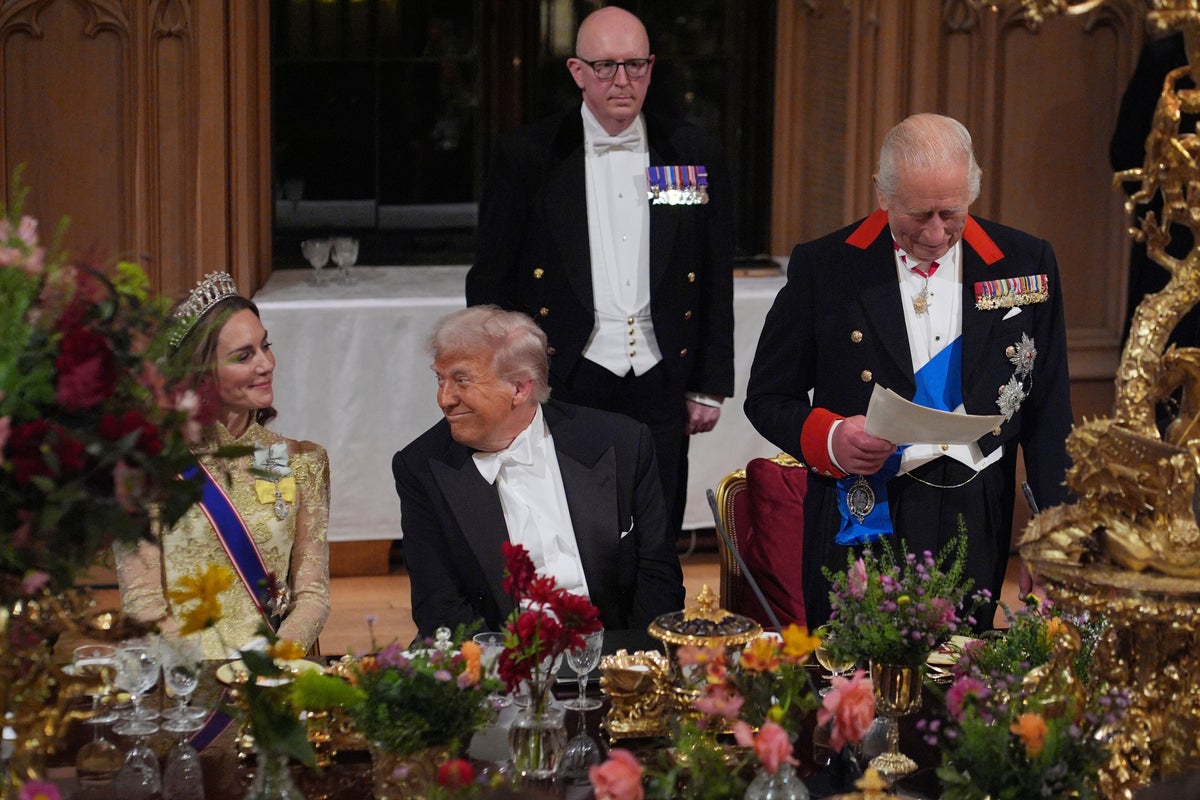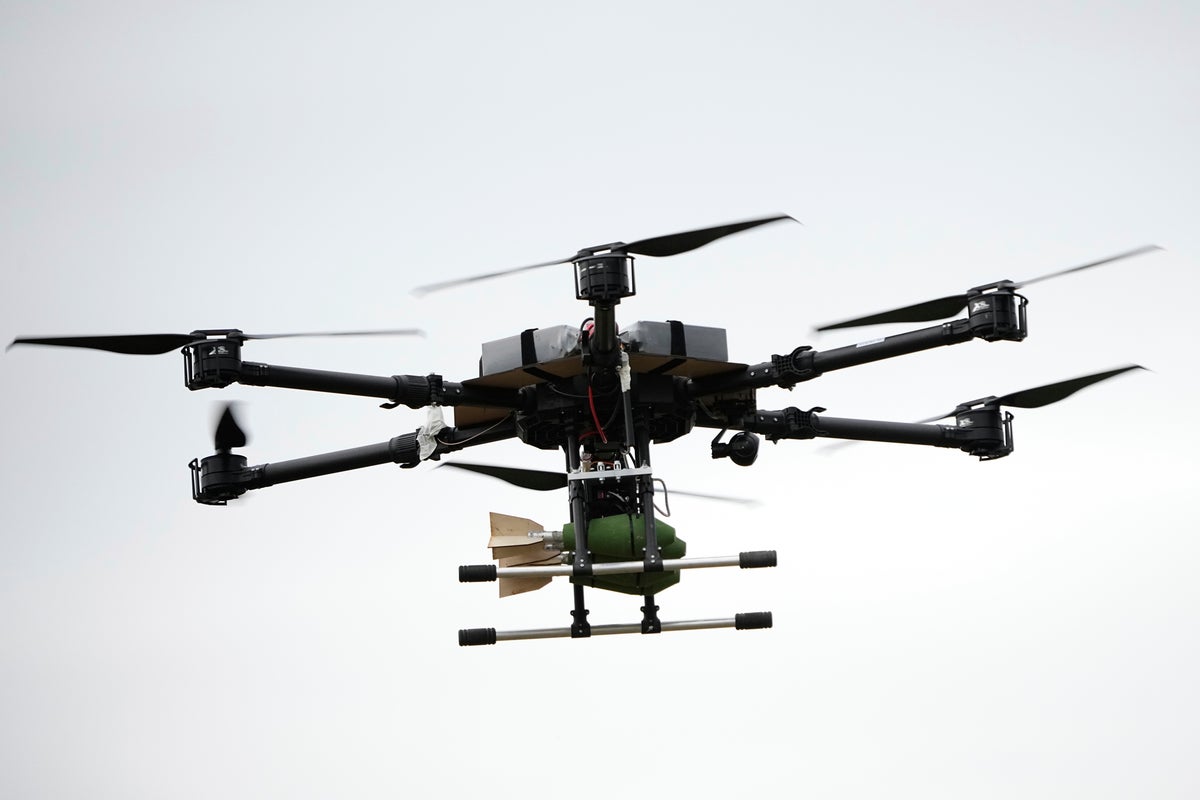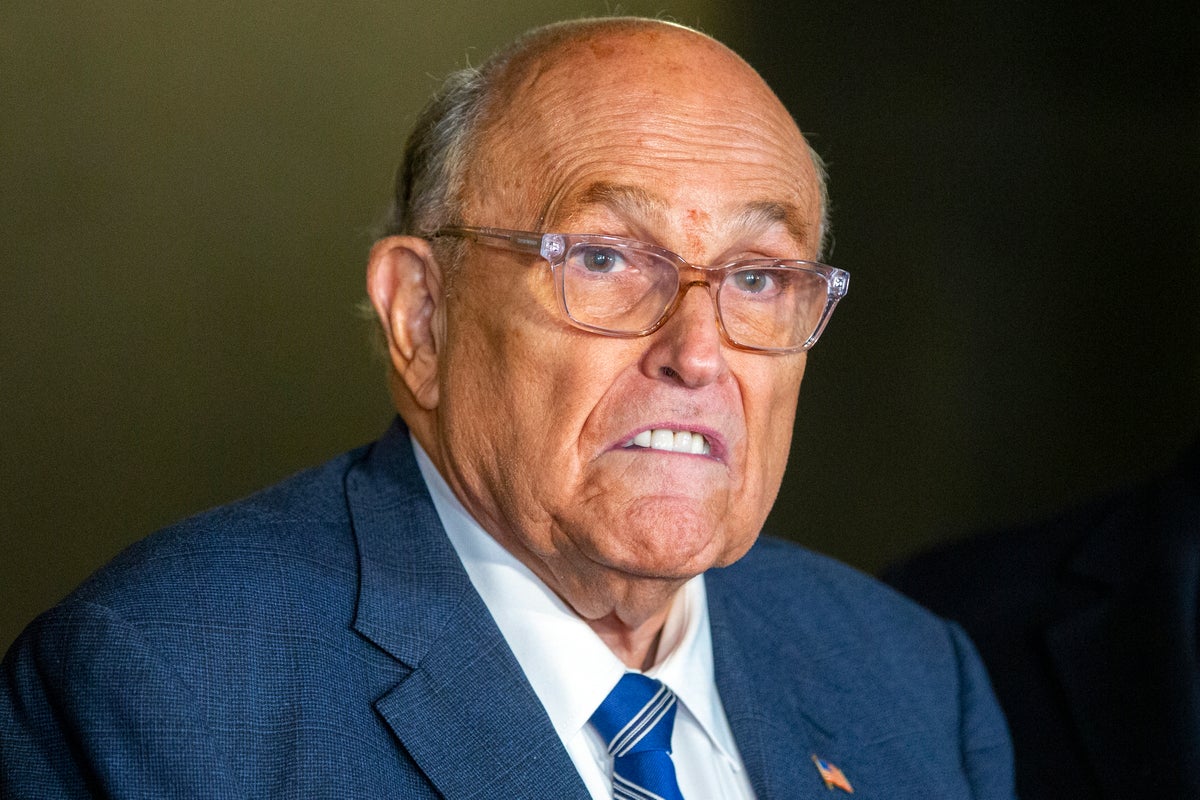Rare early printed books mentioning Ukraine to be displayed in Kyiv





© PA

© Copyright 2025 The Associated Press. All rights reserved.

Germany is throwing its support behind the use of frozen Russian state assets to support Ukraine, marking a significant shift in Berlin’s position, Bloomberg reports.
The move adds momentum to European discussions on how to leverage the roughly $300 billion frozen after Russia’s full-scale invasion of Ukraine in 2022.
European governments and G7 allies have been weighing options to channel additional revenue from these funds to bolster Kyiv’s defense. So far, the EU and partners have agreed to direct interest income from the assets to Ukraine, but pressure has been growing to go further.
European Commission President Ursula von der Leyen earlier this month urged the bloc to create a “reparations loan” for Ukraine, funded by cash balances linked to the frozen Russian assets.
Germany’s support is seen as crucial, as it had previously been wary of measures that might threaten Europe’s financial hub or breach principles of state immunity.
The shift in Berlin reflects fears that declining US support under President Donald Trump could leave Europe shouldering a larger share of the aid for Ukraine. There are concerns this economic burden could also fuel the rise of the country’s far-right.
The issue will be raised at a meeting of EU finance ministers in Copenhagen this week and again at the October 23-24 EU leaders’ summit, where officials aim to reach a decision.

European Union member states have unanimously agreed to open negotiations with Canada and the United Kingdom on accessing the bloc’s €150 billion defense investment fund, the Danish EU presidency announced.
The decision to begin talks on the Security Action for Europe (SAFE) program was reached without opposition. If agreements are finalized, British and Canadian companies could participate in joint procurement funded through SAFE, supplementing recently signed security and defense partnerships between the EU and both countries.
The move comes as other non-EU nations seek entry into the program. Albanian Prime Minister Edi Rama, whose country aspires to EU membership, told NATO Secretary-General Mark Rutte in Brussels on 17 September that he wanted to discuss how Albania could gain SAFE access, Bloomberg reports. Türkiye and South Korea have also requested access to the credit fund.
On 9 September, the EU allocated the €150 billion in SAFE defense credits among 19 countries, with Poland receiving nearly one-third of the funding. Interested countries must submit official applications with investment plans by 30 November 2025. The first credits are expected in early 2026.
The SAFE program was created in response to Russian aggression against Ukraine and the need to strengthen European defense. It provides member states with long-term, low-interest loans for defense equipment purchases.
Currently, funds are primarily available to companies from EU member countries, while Ukraine holds special status — it cannot receive direct credits but can participate in joint procurement.
Ukraine hopes the EU rearmament program will cover shortfalls in domestic financing for Ukrainian manufacturers starting in early 2026.



Russian forces targeted railway infrastructure and civilian facilities across Ukraine during overnight strikes on 17 September, leaving six people injured at a gas station in Poltava Oblast and disrupting train schedules nationwide.
The attack on a gas station in Poltava district injured “five drivers and a female employee,” according to the Poltava Oblast Prosecutor’s Office. The female worker remains in critical condition, while all victims were hospitalized following the strike.
Railway operations faced significant disruption after Russian forces “attacked railway infrastructure in the Myrhorod district of Poltava Oblast,” reported regional administration head Kohut. The strikes caused power outages across several sections, forcing Ukrzaliznytsia to deploy backup diesel locomotives.
Four passenger trains experienced delays of up to three hours:
“As of 07:00, damage has been localized and power has been restored – trains (including suburban electric trains) will continue to operate normally,” Ukrzaliznytsia announced.
The railway attack sparked fires that were “localized by emergency services units,” with one person injured in the incident, Kohut confirmed.
Russian strike drones also hit Poltava district directly, damaging “the building of a gas station,” according to the prosecutor’s office. Authorities opened criminal proceedings under Article 438 Part 1 of the Criminal Code for war crimes, carrying penalties of 8-12 years imprisonment.
The overnight assault extended to Kyiv Oblast, where regional head Mykola Kalashnyk reported fires in two districts. “In Boryspil district, warehouse facilities caught fire. In Bucha district, a fire broke out in a private house,” he said. Emergency services contained both blazes with no preliminary casualties reported.
The large-scale attack began at 9 pm on 17 September, with Russia launching “75 strike drones of Shahed, Gerbera and other types from the directions: Kursk, Orel, Millerovo, Primorsko-Akhtarsk,” according to Ukraine’s Air Force. Over 40 of the attacking drones were Shaheds.
“Ukrainian Defense Forces’ aviation, anti-aircraft missile troops, electronic warfare units, unmanned systems units, and mobile fire groups” repelled the air attack, the Air Force reported.
By 9 am on 18 September, air defenses had “shot down/suppressed 48 Russian drones of Shahed, Gerbera and other types in the north, east and center of the country.” One Russian drone remained airborne at the time of the morning report.



© Copyright 2016 The Associated Press. All rights reserved.











Nato official says weapons 'already flowing' under new PURL initiative

© Getty Images




A Ukrainian Armed Forces major has been convicted of high treason and sentenced to 15 years imprisonment with property confiscation for collaborating with Russia’s Federal Security Service (FSB).
The Lviv Railway Court verdict doesn’t name the convicted officer, but Zaxid.net identified him as Major Yuriy Lavryk. His case matches the July announcement from Ukraine’s Security Service and Prosecutor General’s Office about capturing an FSB operative embedded in the Ukrainian Air Force.
Lavryk filmed Ukrainian military positions from inside his own base in western Lviv and handed the videos to Russian intelligence, according to the court documents. This information could further be used for drone or missile strikes on Ukraine.
The recruitment came through family. Lavryk’s ex-wife lived in Melitopol, southern Zaporizhzhia Oblast, when Russia invaded in February 2022. She sided with the occupiers and agreed to work with them. Russian FSB operatives used her as their bridge to Lavryk.
From his position at the Lviv military unit, Lavryk recorded personnel locations and equipment deployments. Each video went to his former spouse, who passed the intelligence to her Russian handlers.
But Lavryk’s work extended beyond gathering military secrets. He purchased multiple Ukrainian mobile phone starter packs, activated them in Lviv, then provided the numbers to FSB operatives through his ex-wife. The phones gave Russian intelligence a communication network inside Ukraine.
Investigators found more than espionage equipment when they searched Lavryk’s Lviv residence. He had stored a Kalashnikov AKS-74U assault rifle and 30 rounds of ammunition—illegal weapons that added another charge to his conviction.
Lavryk admitted his guilt under three articles of Ukraine’s Criminal Code:
The 15-year sentence includes complete property confiscation.

© Copyright 2025 The Associated Press. All rights reserved.




Today, the biggest news comes from the Kupiansk direction, Kharkiv Oblast.
Here, Belarusian volunteers fighting for Ukraine are hammering Russian positions and dismantling their staging grounds. Ideologically opposed to Russia’s invasion and morality, they are taking expert advantage of weak spots that appeared after Russian generals recently grossly misallocated their resources.
At Kupiansk, Ukrainians continue to hold the line with commandos of the Ukrainian intelligence directorate forming a formidable part of the defense, and standing beside them, integrated into the unit, is the Belarusian Volunteer Corps.
While there are many groups of Belarusian volunteers, this unit is integrated into and has received special forces-level training from Ukraine. They do not operate alone, instead acting as support elements for deep special forces raids, sabotage, and reconnaissance missions, as well as a number of teams conducting these operations themselves.
For one of these missions, Belarusians in the mortar unit of the volunteer corps modified and specialized their rounds for a specific purpose. Combining a napalm-like substance with thermite flakes, these incendiary shells were meant to burn away forest cover, force Russians out of their dugouts into the open, and create a massive, long-lasting distraction.

Geolocated footage shows these rounds landing in streaks on a small forest near the settlement of Kindrashivka, the napalm-like substance holding the incendiary thermite flakes together burning at over 2,000 degrees Celsius or 3,600 Fahrenheit.

The mission was to hold an active defense in front of Kindrashivka, as Russian infiltrators have regularly tried to establish a foothold here. The forest is linked to the settlement by a narrow series of tree lines through which Russian infantry move under the cover of darkness, after gathering first in the forest.
However, the fires raining down on them distracted the Russians and flushed them out of their hideouts. Reportedly, they were then engaged from behind by a special forces raiding party that cleared the forest of Russian soldiers.
The Belarusian operation here was a direct result of problems caused by Russian commanders themselves. Recently, amidst stalling progress at Kupiansk and eager to report success, another classical flag planting operation was launched; however, this one made the mistake of reporting successes far beyond what was believable.

Russian soldiers were forced to move into Kupiansk in civilian clothing to prevent Ukrainian interdiction, before unfurling flags all the way in the center of the town. Proudly satisfied they could publish footage proving the Russian capture of half of the town in a single day, Russians shared the footage across social media, which was then promptly tracked and geolocated by the Ukrainian 10th Army Corps.
Discovering every single one of these infiltration groups, the Russian pretenders were quickly dispatched by FPV drone strikes and elite forces going door to door. The Russian tricolors were taken as trophies, while Russian military analysts were forced to admit that commanders had sent in these soldiers to die for an information victory that only lasted a couple of hours.

While not only a suicide mission for the Russian soldiers involved, the operation was a gross misallocation of Russian resources across the Oskil River. The wasteful throwing away of dozens of soldiers’ lives left Russian soldiers fighting the actual battle without reinforcements; a situation lasting several days due to the difficulty of fording troops across the heavily monitored river.
The Belarusian operation of destroying a Russian staging ground was only a part of the Ukrainian response, as combined Ukrainian forces across the entire Russian bridgehead took advantage of the Russian miscalculation.
Notably, Russian commanders tried to salvage the situation with yet another flag planting operation, this time sticking the Russian flag to the Kupiansk Television mast with drones and a magnet, enraging Russian military observers who, in response, called for the complete purging of the command and leadership of the Russian Sixth Army.

Overall, Russian commanders made a gross mistake, leading to the deaths of dozens of their fighters, leaving Russians fighting the actual battle for Kupiansk understaffed and without reinforcements. Taking advantage, Ukrainians cleared out Russian staging grounds, as Belarusian volunteers showed highly adaptive skills, creating explosives tailored specifically for the mission at hand.
As the Belarusian force trained in the ways of Ukrainian special forces numbers approximately 300 soldiers in the Kupiansk direction alone, these motivated fighters are demonstrating their commitment to the cause and indomitable will to fight against what they consider to be the Russian menace.
In our regular frontline report, we pair up with the military blogger Reporting from Ukraine to keep you informed about what is happening on the battlefield in the Russo-Ukrainian war.








Russia is trying to blame Ukraine for the attacks on NATO. Recently, a video appeared in Lithuania showing “drone debris with Ukrainian writing,” which Russian Telegram channels have been actively spreading, Spravdi reports.
In early July, Polish investigators revealed that wreckage from Russian drones shot down in Ukraine contained 4G modems equipped with SIM cards from Polish mobile operators, as reported by Polish journalist Marek Budzisz. Later, a SIM card from a Lithuanian operator was also discovered in another drone. Analysts say the findings directly point to Russia’s preparation for drone incursions into NATO airspace, as Moscow tested mobile network connections in advance.
Fact-checkers at Ukrinform confirmed that the clip was professionally edited, with rapid scene changes, unlike amateur footage, indicating it was staged.
The original video came from the TikTok account katelynltu, created specifically for this post. The account’s avatar is also used by other fake profiles, confirming its bot status.
In reality, the video is a Russian propaganda fabrication aimed at distracting from Russia’s real attacks on NATO countries.
Russian propagandist RT correspondent Oleksii Stefanov, previously expelled from Latvia for propaganda, appears in the clip, confirming the action was planned.
Since late July, Russia has regularly carried out drone attacks on the Baltic states and Eastern Europe. Lithuania confirmed that drones deliberately violated its airspace, while Poland and Romania were also targeted by Russian drones.
Similar fakes are actively spreading in Poland and Romania, undermining trust in information about actual strikes.
On 10 September, Russian drones violated Polish airspace. The incident prompted Polish aviation to scramble and temporarily shut down airports in Warsaw, Lublin, and Rzeszów amid fears of a wider attack. NATO advanced fighter jets shot down at least four of the reportedly 19 drones that crossed into Poland.


As the war grinds on, Ukraine needs hundreds of billions of dollars. Ukrainian President Volodymyr Zelenskyy stated that if the war continues into 2026, the country will lack $120 billion annually to finance defense and recovery.
The Kremlin continues to reject all US proposals to end the war in Ukraine that do not concede to Russia’s full demands, which are regime change and significant territorial concessions and russification, while reiterating calls to eliminate the so-called “root causes” of the war. Meanwhile, the US President Donald Trump administration has not approved any aid package for Ukraine or imposed sanctions on Moscow.
Half of this sum—$60 billion—comes from Ukraine’s budget, while another $60 billion must be secured from other sources, primarily Western partners.
“During the war, the cost of this conflict for one year amounts to $120 billion,” Zelenskyy stressed during a joint briefing with European Parliament President Roberta Metsola in Kyiv.
He added that Plan A is to end the war, while Plan B is to secure $120 billion in funding.
Earlier, Chief of the General Staff Andrii Hnatov noted that Ukraine spends about $172 million per day fighting Russia.
The country cannot sustain such costs with its own resources alone, making Western financial support critical, Novini.Live reports.
Despite phone calls from US President Donald Trump to Russian leader Vladimir Putin and his invitation to a summit in Alaska, Russia shows no intention of halting its aggression.
This underscores the need for Ukraine to secure stable and predictable funding for the coming year.
Previously, Reuters reported that Poland, under an EU program, will receive €43.7 billion to strengthen its defense capabilities within the Security Action for Europe initiative. At the same time, Ukraine is sometimes attacked by up to 700 drones in a single night.




Children living under constant threat are finally safe. Ukraine’s humanitarian program, Bring Kids Back UA, has evacuated 16 children from Russian-occupied territories.
Russia’s treatment of Ukrainian children during the war has been brutal. Since the full-scale invasion in February 2022 through the end of 2024, at least 654 children have been killed and over 2,158 injured, not including Mariupol, where, reportedly, more than 100,000 civilians were killed.
They are now in Ukraine, receiving psychological support, restoring documents, and taking their first steps toward a peaceful life, according to Andrii Yermak, Head of the Presidential Office.
The program, initiated by President Volodymyr Zelenskyy in 2023, aims to return all Ukrainian children abducted by Russia. To date, 19,546 children have been stolen.
Among the rescued is a 15-year-old girl who escaped occupation with her aunt after her parents and older brother were sentenced on fabricated charges. Two sisters, aged 14 and 7, lost their home and belongings in a fire that completely destroyed their house.
Another 15-year-old girl stayed indoors for nearly three years, living in fear of the occupiers taking her children. A 10-year-old boy was targeted by the occupation’s “care service,” which tried to seize him from his parents.
“All of them are now safe in Ukraine. Due to the Save Ukraine team and partners for helping rescue these children. We are fulfilling the President’s mission to bring all Ukrainian children home,” said Yermak.
Earlier, the Ukrainian Center for Countering Disinformation reported that in Russian-occupied Donetsk, schools have been holding so-called “patriotism lessons” since autumn.
According to Denis Pushilin, the head of the occupation administration, Russian soldiers teach children about their “combat path,” instilling a war cult, erasing Ukrainian identity, and preparing them for future Kremlin military campaigns.
